
Winter 2015
27407 is an LMS Third Open built in 1947. It was used by the SRPS for Railtours until displaced by more modern BR Mk1 stock. The saloon has 7 bays of 2+2 seating giving an overal capacity of 56 seats. The vehicle is vacuum braked and dual steam and electrically heated.
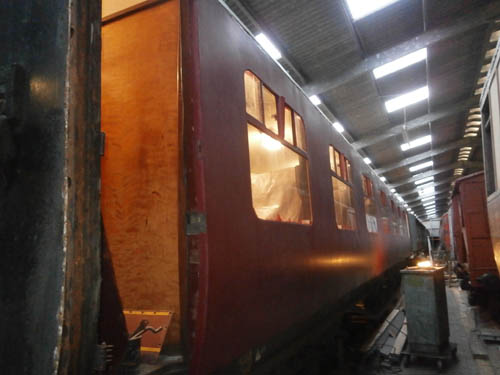
The rusted side steel panelling was removed and replaced with new sheeting. This was then primed in green anti-corrosive primer, then undercated in maroon paint.
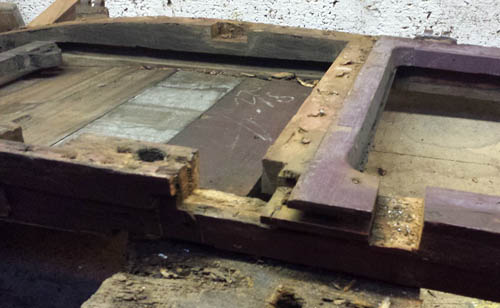
The exterior doors were removed, the steel panelling removed and the exposed framing then checked for damage. There was quite a lot! New garnish rails were required for the two doors on the south side of the coach and these were made and fitted by Don & Robbie. Water running down the droplight had got into the door at garnish rail level and caused considerable rot to the door frame verticals (see photo above). While chiselling out the rot it was noticed that the frame verticals were not made from solid wood but from several thinner pieces of wood glued together. This of course, is much more prone to rot. I guess the doors must have been a victim of post-war austerity.
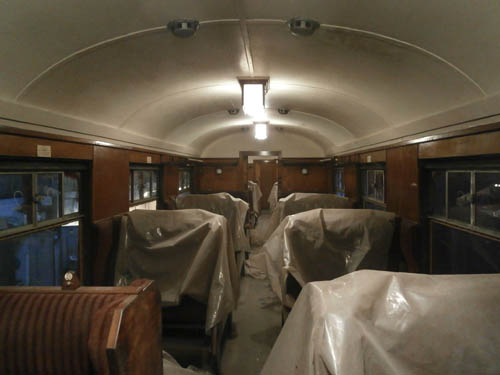
The interior of the saloon wasn't a disaster area, but wasn't in pristine condition either.
During the re-skinning operations, the upholstery was covered by polythene sheeting as you can see above.
Lighting was re-instated by the electrical team and during the period when the carriage is in the RCB for
attention, the lights can be powered from one of the semi-mobile 24V chargers.
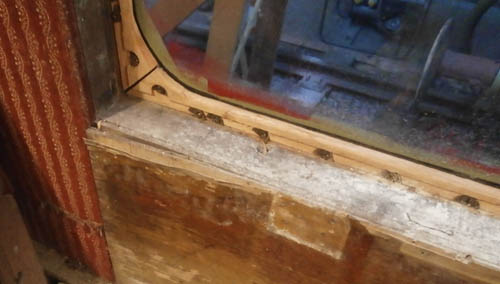
The photograph above shows one of the life-expired plywood panels below one of the windows. As you can see, the wooden surround for the window glass has been renewed, but the plywood panel below has given up the ghost and was earmarked for renewal.
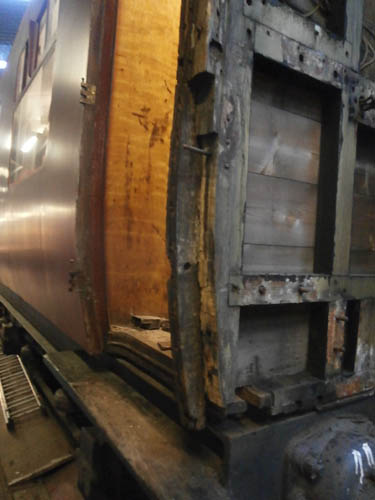
At the north west corner, the door pillar was found to be rotten. The pillar is made up of two
fairly hefty pieces of wood which are bolted together but separated by what looked to be a waterproof membrane. The piece of wood
nearer the door opening was sound but the other half forming the bodywork corner was rotten for a length of about
three feet. The photo shows the pillar after the rotten part had been cut away, but before any replacement work
had been undertaken. You can probably see the beginnings of a lapjoint at the top of the cutaway section.
Between the vertical pillar and the floor there is a strengthening angle iron which has been removed. It was rusted
and a new one was to be made. The iron should be bolted to the floor (new timber required) and through the new
section of pillar.